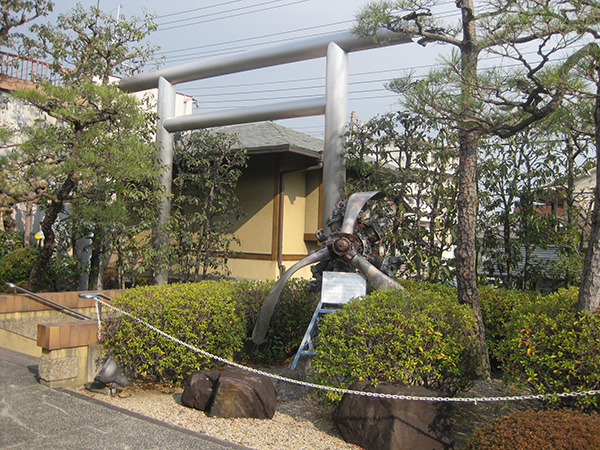Hiko Jinja Shrine

Hiko Jinja Shrine is a relatively modern Shinto shrine founded by Ninomiya Chuhachi (1866–1936), a
pioneer of Japanese aviation. It is known as a place to pray for safe air travel and is dedicated to
the souls of all people who died in aviation accidents. Based on the belief that the world is united
under the same sky, Hiko Shrine honors all victims, regardless of nationality.
Chuhachi’s interest in flight began at an early age and continued throughout his life. While working
at his uncle’s pharmacy as a teenager after his parents’ deaths, he designed and sold kites to support
his studies. When serving as an army medic in his twenties, he drew inspiration from nature and
created a fixed-wing rubber-powered “crow-type model aircraft,” which flew successfully in 1891. Next
was the “jewel beetle-type aircraft,” a tailless man-carrying biplane model built in 1893, but lack of
financing put Chuhachi’s further plans on hold. After years of working in the pharmaceutical industry,
he secured land in Yawata and began building a full-scale prototype. However, before the project could
be completed, the Wright Brothers successfully accomplished the world’s first controlled, sustained
flight of a powered heavier-than-air aircraft in 1903.
Though Chuhachi abandoned his project, he did not lose his love for aviation. As humanity entered the
age of flight, he was saddened by the rising number of deaths in airplane-related incidents. This led
him to Shinto priesthood, and in 1915 he founded this shrine, naming it Hiko Jinja, “the shrine of
flight.” Its main sanctuary is comprised of three altars. The central altar enshrines Nigihayahi no
Mikoto, a deity of the sky. The altar on the right is dedicated to the souls of people lost in
aviation accidents, as well as to aviation pioneers. The altar on the left enshrines prominent figures
of the Japanese pharmaceutical industry.
The shrine was rebuilt in 1989 with a prayer hall in a classical Western style, with columns and
stained-glass decorations depicting animals that inspired Chuhachi’s models. A small museum exhibits
many items related to Chuhachi and his inventions, including sketches, photos, art, kites, and models
of airplanes that he developed. Hundreds of collectible airplane models donated by aviation
enthusiasts are also displayed there.

